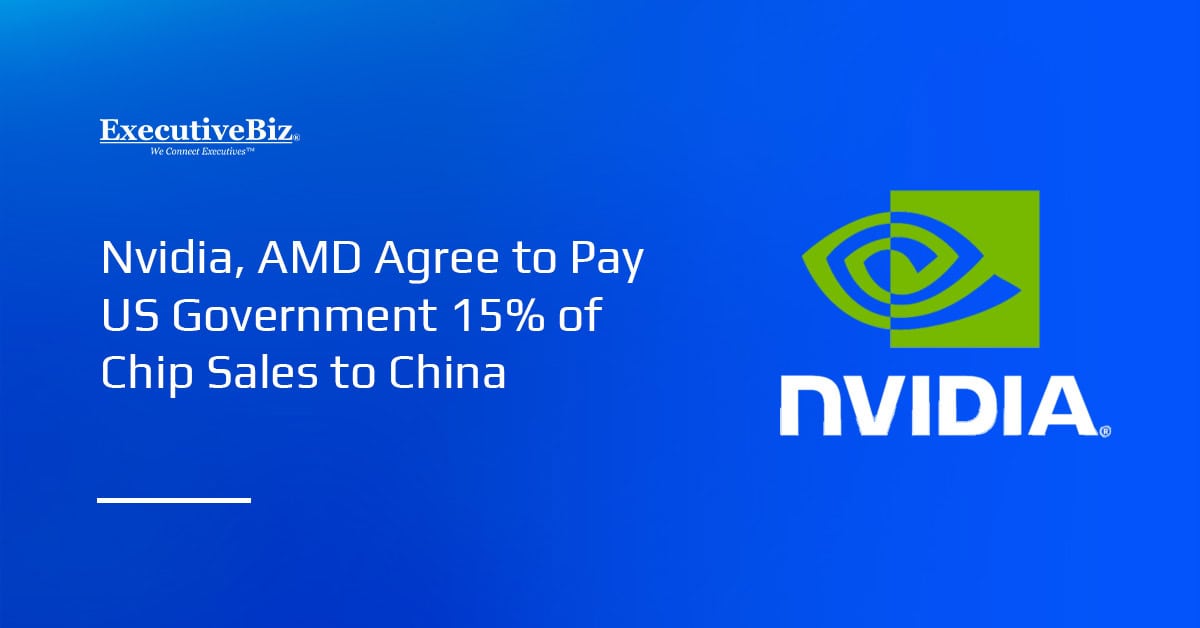Jay Lambke wasn’t planning on becoming a government contractor. When initially embarking on his career in the 1980s, he worked in commercial real estate and was helping to close a deal for a company called Tech Data—now TD SYNNEX. Unexpectedly, the organization’s CEO approached Lambke to join their team. Frankly, Lambke didn’t even know what they did, but he took the leap, and that decision set him on the path to federal IT.
“They ended up moving me to Washington, D.C. to help launch their federal business—this was back in 1989. Since then, I’ve been in federal contracting in various roles across the ecosystem. I’ve worked on the distribution side, the OEM side, and now I’m in the solution provider and integrator space. It’s been a full-circle journey, and I still find it incredibly rewarding,” Lambke, who is now president of innovative tech company Government Acquisitions, Inc., told us in a brand new Executive Spotlight interview.
During the course of the conversation, he let us in on the cutting-edge work the company is doing in the AI space to help federal civilian and defense customers alike.

Potomac Officers Club events consistently host expert discussions between government and industry about the latest innovations in AI. Attend the next two events, the 2025 Navy Summit on Aug. 26 and the 2025 Intel Summit on Oct. 2 for panel conversations about agentic AI in military and how AI can enable intelligence community missions. Register for Navy Summit here and Intel Summit here.
ExecutiveBiz: Tell me about GAI’s culture. What aspects of the company do you think are contributing most to its success while helping to attract and retain top-level talent?
Jay Lambke: At Government Acquisitions, we have what I describe as a mission-focused culture. It’s right on the back of our business cards: Dedicated DNA. Mission Mindset. Everything we do starts with our customer’s unique mission, and we work backward to deliver technology solutions that help them achieve it more effectively.
That focus creates a strong sense of pride within our organization. Whether we’re supporting national defense, cybersecurity, emergency management, border protection or food security, our team is motivated by the real-world impact of what we do. Our people don’t just see themselves as technologists or integrators—they see themselves as contributors to something much bigger.
We’ve also consistently invested in emerging technologies. We’ve been ahead of the curve in areas like AI, automation and data architecture, which gives our team the opportunity to innovate in ways that directly support critical federal missions. That spirit of innovation, tied to a meaningful purpose, helps us attract and retain top-tier talent.
There’s a lot of talk about the U.S. needing to “win the AI race.” I don’t view it as a race with a finish line—it’s an ongoing journey. And we see it as our responsibility to help ensure the federal government stays ahead in that journey. That mindset permeates the culture at GAI and really sets us apart.
EBiz: Where do you see GAI in 5 years and what are the concrete steps you have to take to get to that stage of evolution?
Lambke: Over the last five or six years, we’ve made strategic investments in a few core areas that are now central to our identity and future growth. One of the first was robotic process automation—we built a world-class service delivery and go-to-market practice around RPA in partnership with UiPath, which at the time was the clear leader in the space.
In parallel, we started building out a strong AI practice with NVIDIA as our anchor partner on the infrastructure side. As our work in automation and AI matured, we quickly recognized the critical role data plays in these ecosystems. So we expanded into data management—developing capabilities to clean, prepare and structure data so it’s usable and effective for machine learning and AI models.
We also began onboarding a range of highly specialized independent software vendors—or ISVs—that help address mission-specific needs across the federal space. Today, we have an integrated practice spanning AI infrastructure, AI-focused ISVs, data management and RPA.
We’ve architected our AI practice around five foundational pillars: purpose-built infrastructure, facility readiness, data strategy, software tools, and responsible governance. These aren’t just buzzwords, they’re the backbone of delivering sustainable, scalable AI that our federal customers can trust. From secure, high-performance infrastructure to future-proof data architectures and vetted ISV partnerships, we bring together everything required to operationalize AI effectively.
Agentic AI is emerging as the next leap forward. Agentic systems don’t just generate insights, but autonomously reason, plan and act in service of specific missions. At GAI, using our Framework for Innovative Technology Solutions, or FITS, we partner with innovative companies and bring agentic workflows to areas like autonomous threat detection, extreme weather prediction, mission planning and digital assistants that go beyond Q&A to take proactive actions.
Looking ahead five years, I see us scaling those capabilities significantly. Everything we do is built around delivering tangible value to the customer’s mission—whether that’s a civilian agency, DOD entity or member of the intelligence community. I believe we’ll become even more essential to our customers as they accelerate their adoption of AI and data-driven capabilities.
We also expect to deepen our partnerships—with OEMs like Dell and NVIDIA, and with our growing network of AI ISVs. Our goal is to be the first call our customers and partners make when they’re tackling complex problems that require innovative, mission-aligned technology solutions.
Attend the “Optimizing Navy Decision-Making with GenAI” panel at the 2025 Navy Summit, which will feature Navy CTO Justin Fanelli and Navy Chief Data and AI Officer Stuart Wagner. Save your spot for this high-level GovCon networking conference now!
EBiz: In which applications are you seeing the highest demand for AI/ML from your federal customers, and can you explain what’s driving that demand?
Lambke: I’d group it into a few areas. First is computer vision. That’s a big one. We’re also seeing demand for multi-signal processing and aggregation—the ability to take in multiple signals from different sensors and sources, aggregate them and present a unified view.
Explainable AI is another key area. There are real concerns about what AI is doing, especially in mission-critical decision-making. AI hallucination is a well-known issue, so the ability to explain how decisions are made is critical.
We’re seeing significant momentum around real-time video restoration. One of our ISV partners we collaborate with delivers near-instantaneous video restoration with just a three-millisecond delay for video footage obscured by fog, rain, low light or other visual noise. This capability dramatically improves situational awareness in challenging environments. Paired with another partner’s advanced computer vision analytics, we can extract actionable intelligence from previously unusable video feeds.
One of the more exciting developments is in global-scale battlefield simulation. We’re deploying a solution right now that allows for full-scale simulation, and I think it has major potential.
One of the most overlooked barriers to AI success in government is data readiness. We’ve built a practice not just around managing data, but making it AI-usable— cleansing, labeling, vectorizing and structuring it so that models can actually perform. Without this foundation, even the best AI tools fall short.
Another area you might not expect is healthcare. With the Department of Veterans Affairs and the Defense Health Agency, we’re seeing strong demand for AI applications, and we’ve got some great offerings in that space.
Lastly, customer-specific GPTs—custom large language models trained on client data—are really taking off. Whether it’s contract data, HR data or otherwise, clients are exploring how to build tailored GPTs for very specific use cases.
As for what’s driving all this, I’d say it breaks down into two things. First, customers want to understand how to use AI to improve efficiency and mission delivery. On the DOD side, that translates to use cases like computer vision and multi-signal aggregation. On the civilian side, there’s more caution. Agencies want to start small, test in safe environments and make sure they trust the technology before rolling it out widely.
That’s why we’re seeing these customer-centric GPTs—agencies can train a model on internal data like contracts or legal documents and use it as a digital assistant. With staffing down in areas like contracting, finance and technical support, this kind of automation offers real value and a safer way to begin deploying AI.
EBiz: Generative AI has obviously been the source of a major AI boom, but some of these tools are also proving to be risky. How do you think cybersecurity will have to evolve to stay ahead of potential threats posed by AI tools?
Lambke: The importance of cybersecurity has never been greater because of the power of AI. The good news is you can leverage AI to strengthen cybersecurity in a defensive way. The bad news is adversaries can also use it offensively.
There should be no debate about the need for robust security standards like CMMC. The real challenge is ensuring these standards strengthen our entire defense industrial base, rather than creating barriers. Cost can’t be the reason we lose out on the agility and innovation of small businesses. We fully support the government’s efforts to streamline these important compliance measures; it’s not just helpful for business, it’s a strategic imperative for national security.
For any company serious about partnering with the U.S. government, the world’s top cyber target, there can be no shortcuts on security. We rejected the flawed approach of ‘direct-from-commercial,’ because those solutions just aren’t security-ready as is. Instead, we opted for compliance-by-design and tailored security integration. It’s how we deliver technology that is not only innovative but fundamentally secure and ready for accelerated government adoption.
Another key component is a secure supply chain. People sometimes discount how important supply chain validation is when it comes to cyber risk. When you’re integrating multiple components or chunks of software from all over the world into a single solution, you have to be able to explain and detail exactly what’s in there, where it came from, and how it’s going to behave — both software and hardware.
So between CMMC and supply chain scrutiny, I think we’re headed in the right direction. And I think AI will help identify patterns that human analysts would never detect — that’s a major strength. AI tools can flag anomalous or clearly nonhuman behaviors that signal something is wrong. That’s how I see it evolving.






